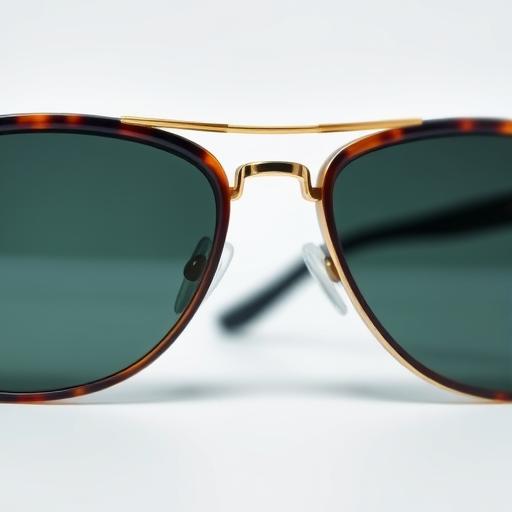Where Are Maui Jim Sunglasses Made

When you invest in a pair of Maui Jim sunglasses, you’re not just buying eyewear—you’re choosing a brand synonymous with premium quality, unbeatable clarity, and style inspired by Hawaiian living. But have you ever wondered where these high-performance sunglasses are made? Understanding the origins of your sunglasses can reveal a lot about their craftsmanship, durability, and the ethical standards behind them. In this article, we’ll explore Maui Jim’s manufacturing locations, their commitment to quality, and why where they’re made matters.
Understanding Maui Jim’s Brand Heritage
Founded in 1980, Maui Jim started as a small company on the island of Maui, Hawaii, with a mission to create sunglasses that could withstand the island’s intense sunlight while providing crystal-clear vision. Over the years, the brand has grown into a global leader in polarized sunglasses, known for its PolarizedPlus2® technology, which enhances color and reduces glare. Maui Jim’s core values revolve around quality, innovation, and durability, ensuring that every pair of sunglasses meets the highest standards.

Where a product is made plays a crucial role in its quality, especially for sunglasses. The manufacturing location influences everything from material sourcing to craftsmanship, which is why Maui Jim carefully selects its production facilities to maintain consistency and excellence.
Where Are Maui Jim Sunglasses Manufactured?
Primary Manufacturing Locations
Maui Jim sunglasses are produced in multiple locations to balance quality, cost, and efficiency:
- Japan: Known for its precision engineering, Japan is where Maui Jim crafts its high-performance lenses. Japanese manufacturers are renowned for their optical expertise, ensuring superior clarity and durability.
- China: While some components and frame assembly may take place in China, this location allows Maui Jim to scale production while maintaining strict quality control standards.
Though the brand doesn’t disclose every facility, these primary locations reflect its commitment to combining artisanal craftsmanship with modern manufacturing techniques.
Why These Locations?
The choice of Japan for lens production stems from its long-standing reputation for optical innovation. Japanese manufacturers excel in precision optics, making them ideal for creating Maui Jim’s advanced lenses. Meanwhile, China’s advanced manufacturing infrastructure allows for efficient production of frames and other components without compromising quality.
Regardless of location, Maui Jim enforces rigorous quality control measures, ensuring every pair meets the brand’s exacting standards before reaching consumers.
The Maui Jim Manufacturing Process
Lens Production
Maui Jim’s lenses are a standout feature, thanks to their proprietary PolarizedPlus2® technology. These lenses are designed to eliminate glare, enhance color contrast, and provide 100% UV protection. The company uses advanced scratch-resistant and hydrophobic coatings to ensure long-lasting performance. Each lens undergoes meticulous testing to guarantee clarity and durability.

Frame Production
The frames are crafted from high-quality materials such as stainless steel, acetate, and titanium, chosen for their durability and comfort. Maui Jim prioritizes ergonomic design, ensuring frames fit securely and comfortably for all-day wear. Each frame undergoes extensive testing to withstand daily use while maintaining style and functionality.
Why Does “Made In” Matter for Sunglasses?
The origin of sunglasses impacts several key factors:
- Quality and Durability: Different regions have varying standards in manufacturing, which can affect the final product’s longevity and performance.
- Ethical and Environmental Considerations: Some countries have stricter labor and environmental regulations, which can influence sustainability efforts.
- Consumer Trust: A brand’s transparency about its manufacturing locations builds credibility and trust with customers.
Maui Jim’s strategic manufacturing choices reflect its dedication to delivering top-tier sunglasses while upholding ethical practices.
How to Verify Authenticity of Maui Jim Sunglasses
With the rise of counterfeit products, it’s essential to know how to spot genuine Maui Jim sunglasses:
- Check for the Maui Jim logo and PolarizedPlus2® label on the lenses.
- Inspect the packaging for proper branding and holographic stickers.
- Purchase from authorized retailers to ensure authenticity.
Authentic Maui Jim sunglasses come with a lifetime warranty against defects, adding further assurance of their quality.

Conclusion
Maui Jim sunglasses are a testament to precision craftsmanship, blending Japanese optical expertise with global manufacturing efficiency. Whether the lenses are made in Japan or the frames assembled in China, every pair undergoes stringent quality control to meet the brand’s high standards. Knowing where your sunglasses come from not only ensures you’re getting a premium product but also supports ethical and sustainable practices. If you’re looking for sunglasses that combine style, durability, and superior clarity, Maui Jim is a choice you can trust.
FAQ Section
1. Are all Maui Jim sunglasses made in Japan?
No, while the lenses are crafted in Japan, frames and other components may be produced in different locations, including China.
2. Do Maui Jim sunglasses have lifetime warranties?
Yes, Maui Jim offers a lifetime warranty against defects for both lenses and frames.
3. How can I tell if my Maui Jim sunglasses are authentic?
Look for the PolarizedPlus2® label, Maui Jim logo, and holographic stickers on packaging. Always buy from authorized retailers.
4. Are Maui Jim sunglasses worth the price?
Absolutely. Their superior UV protection, polarization, and durability justify the investment for long-term use.
5. Does Maui Jim use sustainable manufacturing practices?
Maui Jim is increasingly adopting eco-friendly materials and processes, though specific practices may vary by product.
